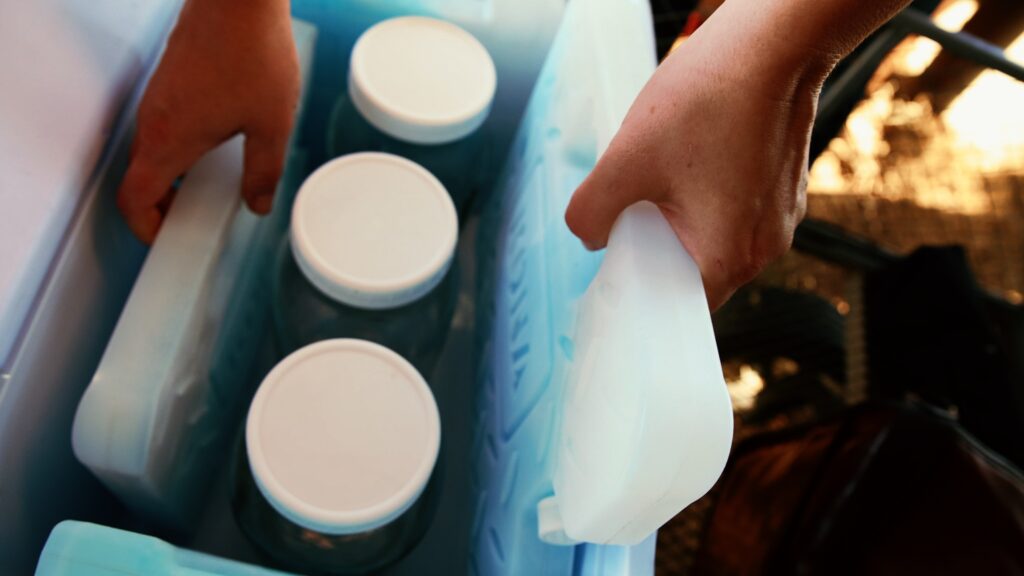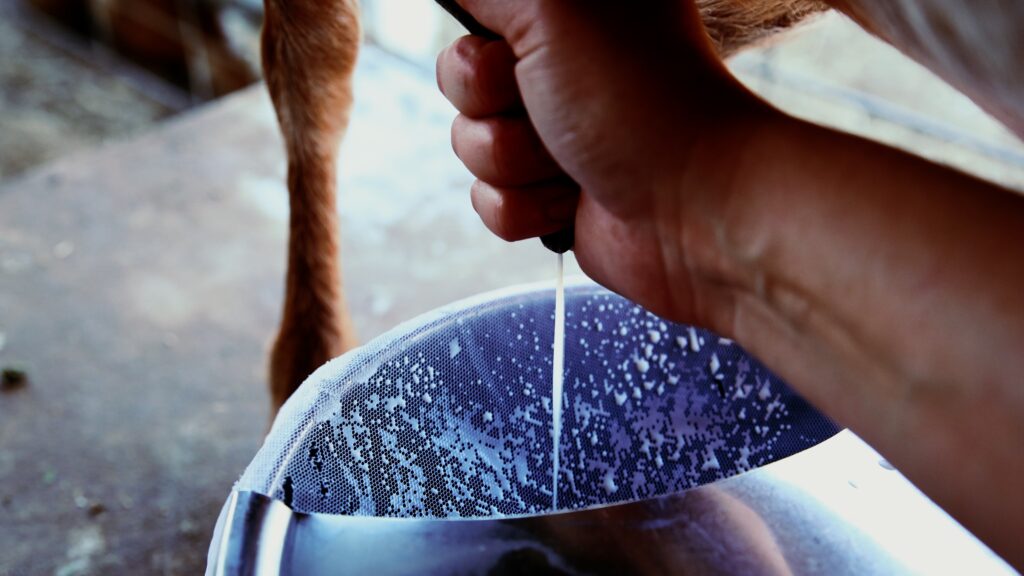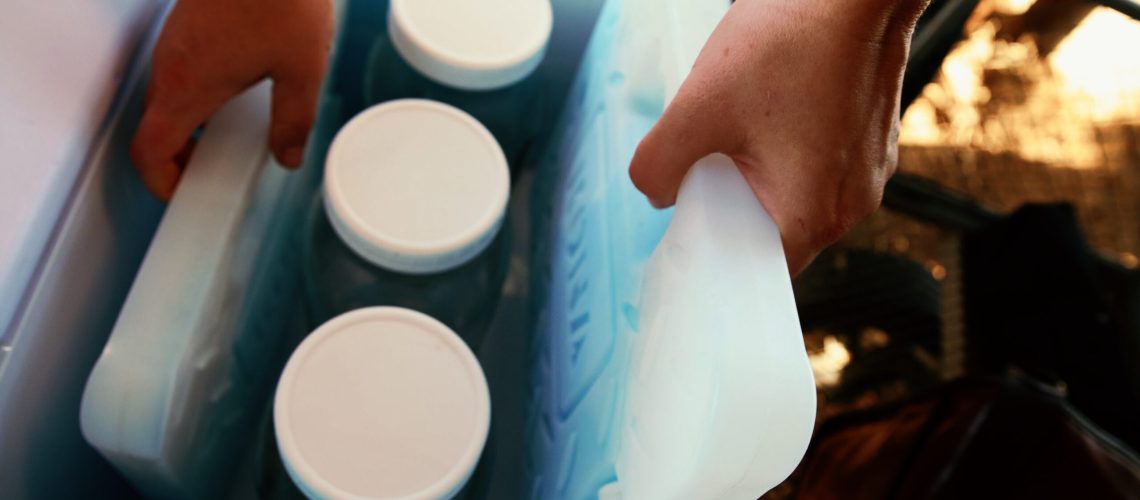Learn the easiest way to rapid cool milk before you’ve even left the barn. In this simple tutorial I show you my hack for making sure my goat milk chills quickly and stays fresh and sweet for a week or more.
Summer milking isn’t my favorite.
Let’s be honest. The flies and the heat don’t make this chore any easier, and the goats tend to be a little crankier because of it too. And then there’s the milk to contend with.
Milk comes out of an animal at their body temperature. For goats this is around 102°F. This means it can take quite some time to cool down to the same temperature as the refrigerator you’re storing it in. If you aim to rapid cool your milk, getting it chilled in summer can pose a problem.
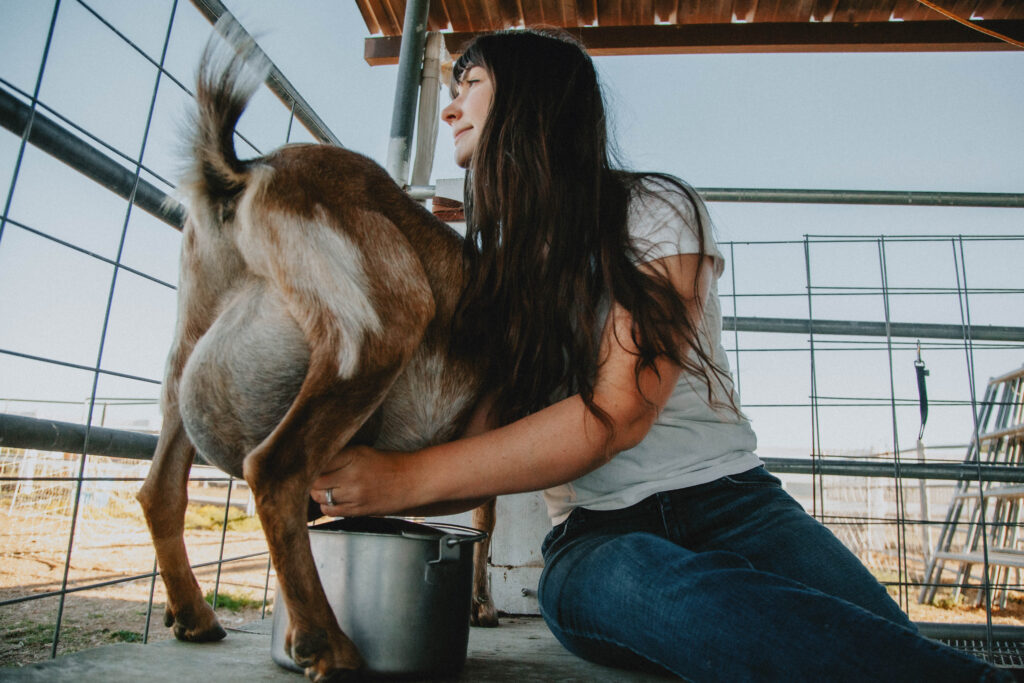
Why Is Rapid Cooling Milk Important?
Rapid cooling milk is the simplest way to keep raw milk fresh.
If you ever took a food safety course to get your food handlers license (throwback to being 16 and getting my first job at Paradise Bakery!), you may remember learning about the “danger zone.” The danger zone is the temperature range between 40° and 140°F. In this warm temperature range, bacteria counts can double every 20 minutes. This means that your milk has the potential to develop more “off” or “goaty” flavors the longer it sits in this zone. To keep your milk tasting sweet and fresh for a week or more, rapid cooling is the way to go
Does Rapid Cooling Matter for Raw Milk?
Rapid cooling is ideal for handling raw milk.
Keep in mind that raw milk from healthy animals doesn’t go bad, it just sours. Sour raw milk is perfectly safe to consume, and can be used for many recipes too. However, raw milk doubles in bacteria the same as anything else when it sits in the danger zone temperature range. This is why cleanliness and proper milk handling are so important to keeping raw milk safe and fresh.
I don’t know about you, but I would rather my milk not go sour on me when I have plans to use fresh milk for yogurt, cheesemaking, or just plain drinking. I also sell our goat milk and it’s important to me that the milk stays fresh and sweet as long as possible.
Long story short – clean raw milk from healthy animals is safe at room temperature, but it tastes best for the longest time when it’s been rapidly chilled!
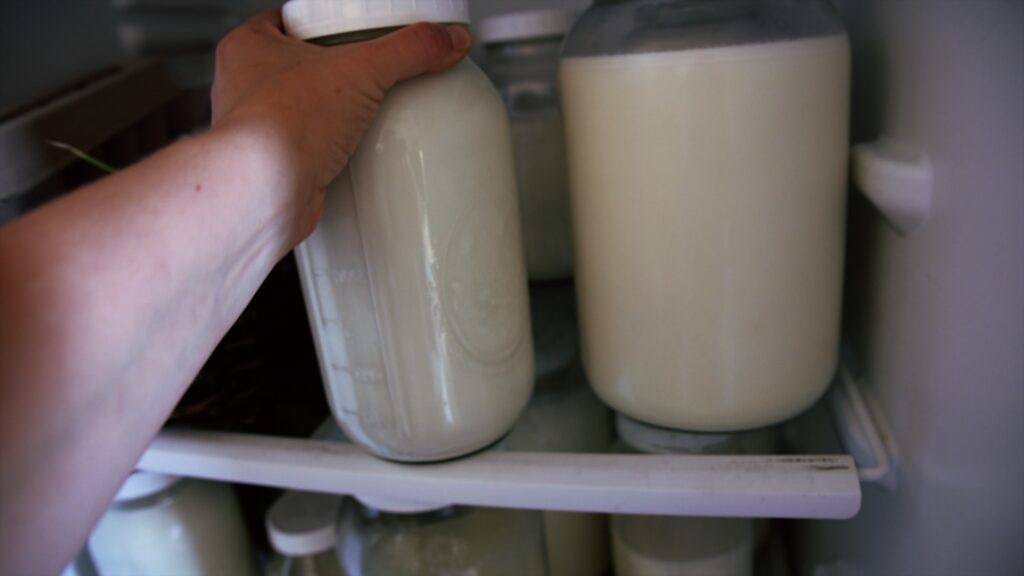
How to Rapid Cool Milk
I’ve tried sticking my jars of milk directly in the freezer for an hour or two and then moving them to the fridge. I don’t know about you, but my life is way too busy and unpredictable in this season of life to remember to not freeze the milk! I ended up with many a jar of goat milk slushy, or worse, cracked jars.
So, here’s how I rapid cool my milk these days.
I keep a medium sized cooler in my milk cart, and every morning I grab a few reusable ice packs from the freezer (I prefer the large ones meant for coolers). I set them in the cooler, and then fill it up about halfway with water.
The water gets ice cold while I start chores. I feed animals, fill up water buckets, collect eggs, and all the other things I tend to do around the barn before I milk. Then when I’m ready, I milk into my stainless steel pail and then immediately strain the milk into glass jars.
I put the glass jars into the ice water in the cooler and they begin the process of cooling right away.
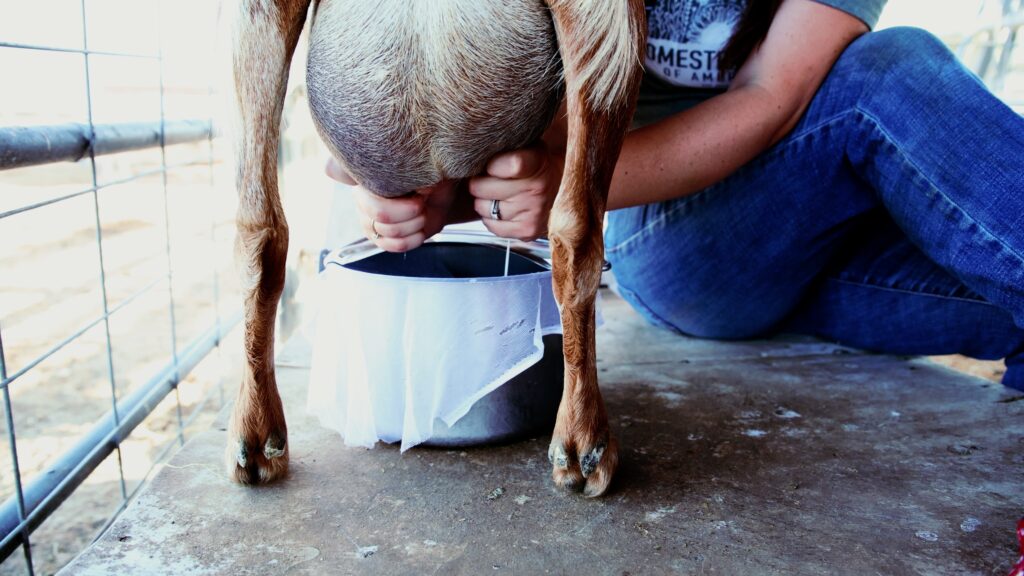
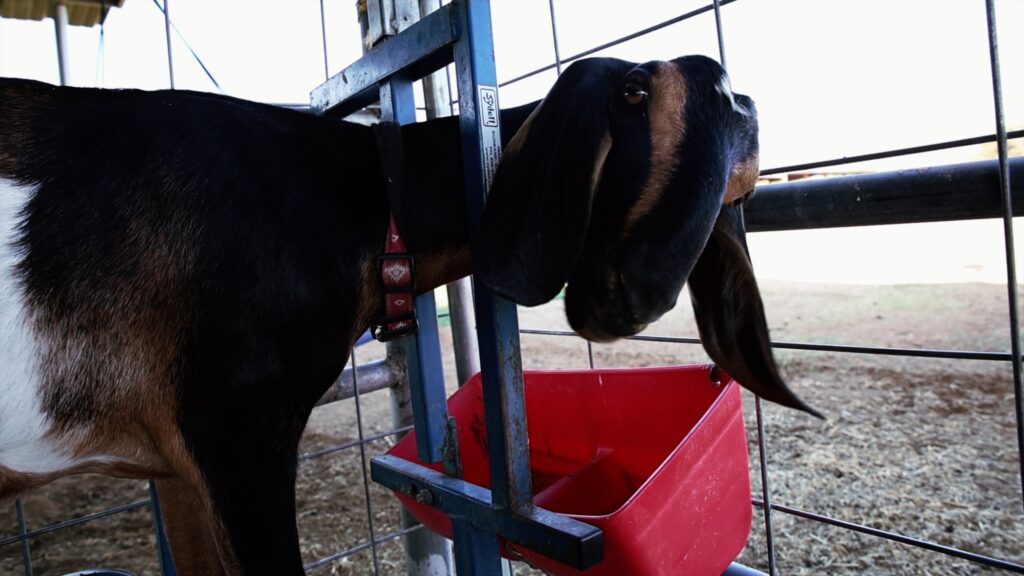
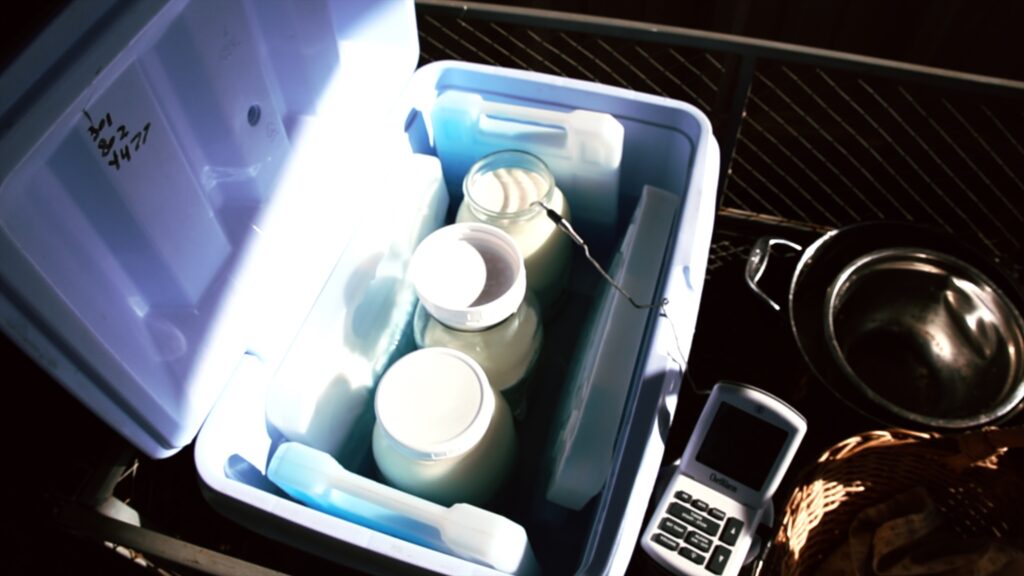
Does this method work for milking more than one goat?
I love that this method works so well for milking multiple animals. I can milk one goat and then have her milk chilling as I milk the next goat. Currently I have four goats in milk, and this method is perfect for making sure all the milk gets cooled as quickly as possible.
How long does it take for the milk to cool?
After I’ve finished all the milking, I usually do a few more chores to give the milk time to sit in the ice water for a few minutes longer. Within about 30 minutes the milk has cooled to between 45°-50°F, and at that point I feel comfortable moving it to the fridge to continue cooling to about 37°.
Making sure the fridge where you store the milk cold enough is another factor in keeping milk fresh longer.
We check our fridge temperature often, and adjust as needed. The internal fridge monitor isn’t always correct!
Are there other ways to rapid cool milk?
There are a few other methods to rapid cool milk.
I used to place my milk jars in the freezer for an hour or two before moving them to the fridge, but as a busy mom it was too easy to forget about them. I ended up with frozen milk and cracked jars too many times to make it worth my while.
I’ve also seen a method of creating a frozen salt brine and submerging jars into a bucket of the brine after milking. This method seems like it would work faster than the ice water. However, you’d have to keep a large bucket of the brine in the freezer to cool as much milk as I tend to be working with, and I just don’t have the freezer space.
For those of you living in cold climates, stashing the milk pail in a snowbank in winter has the same effect, but alas, I’ll never get the chance to try it here on my Arizona desert homestead.
